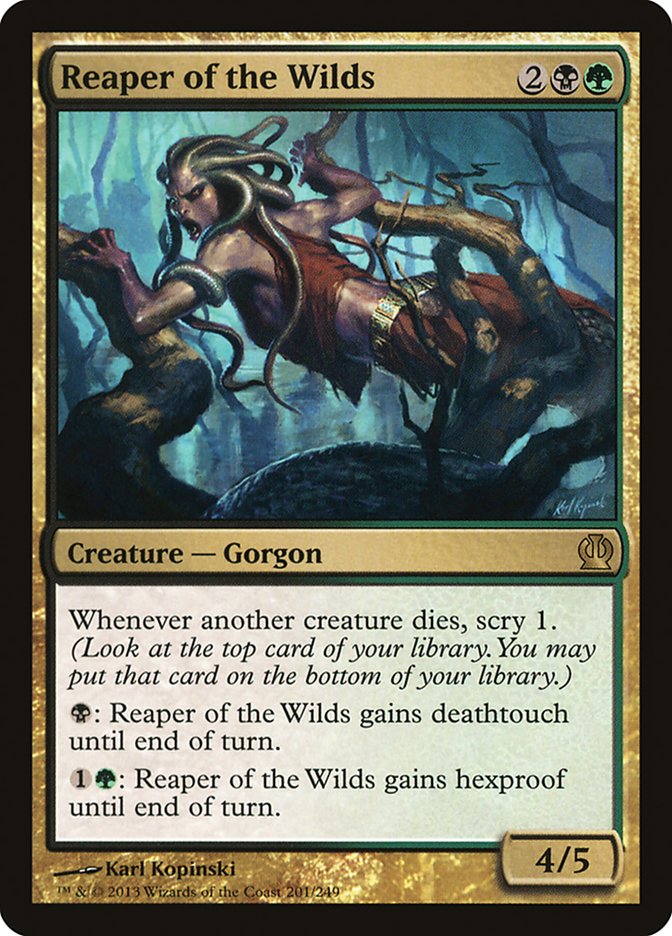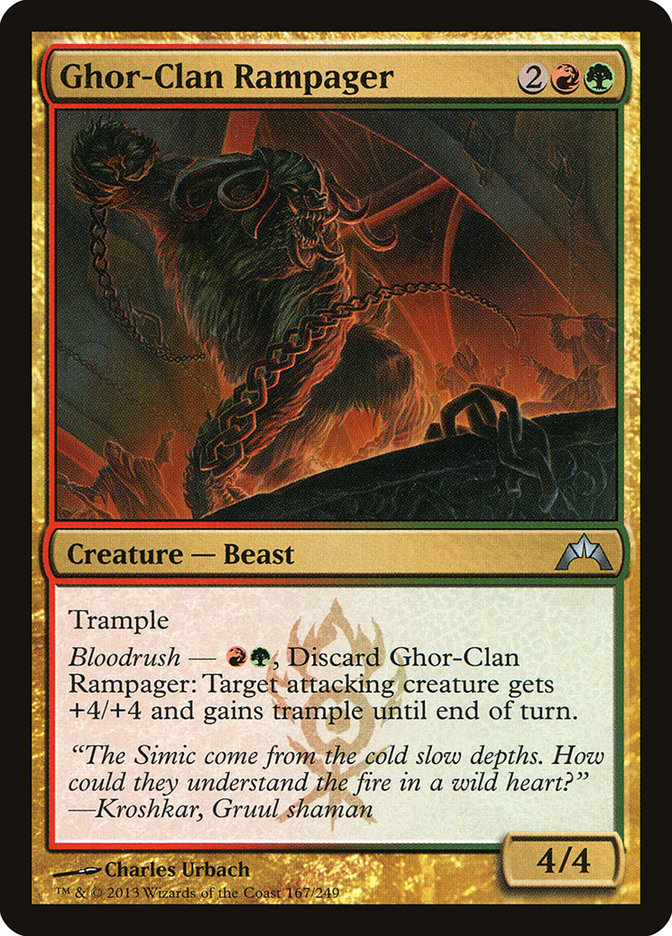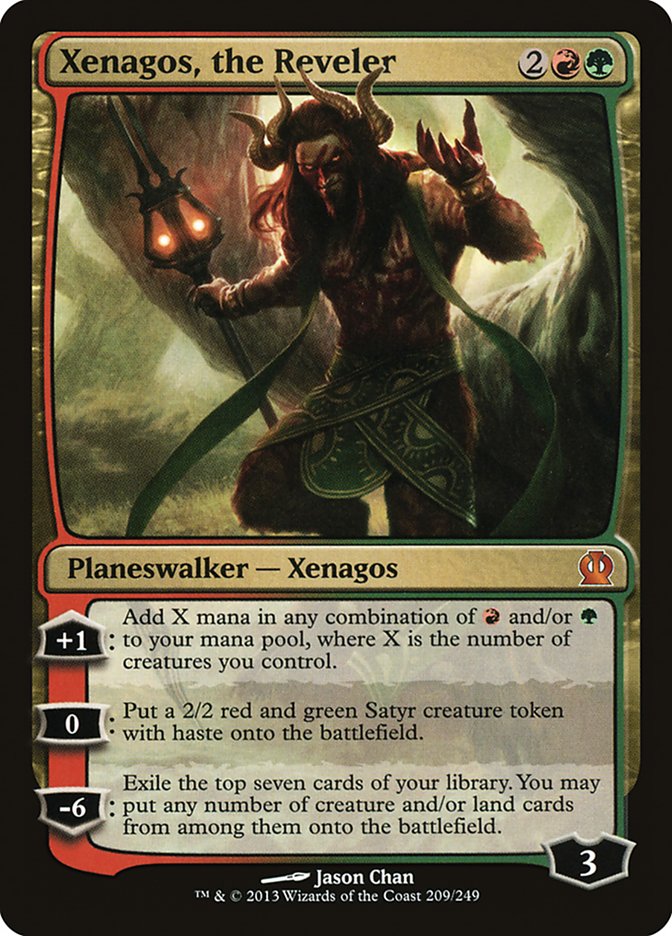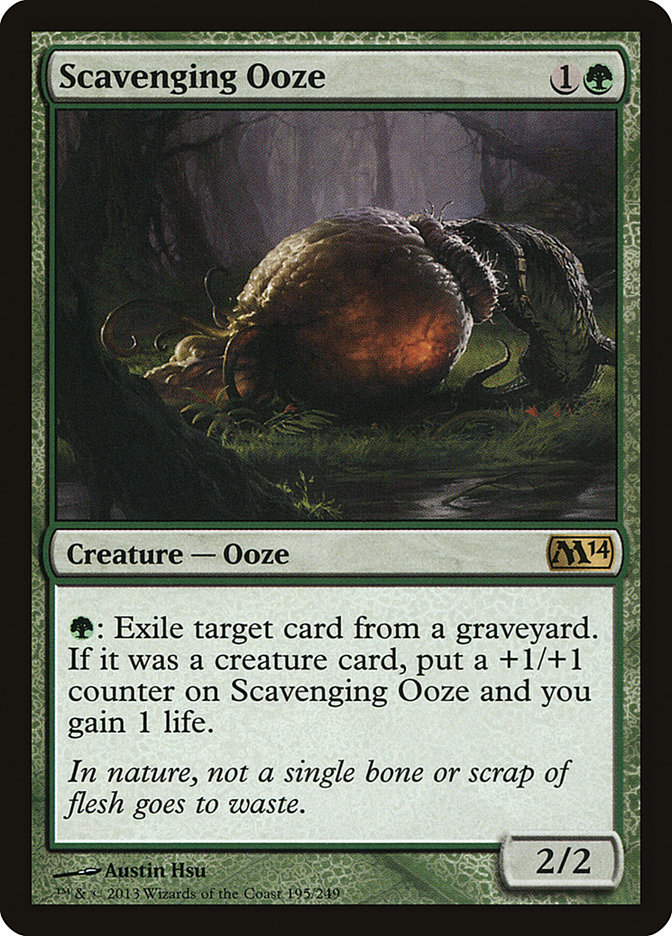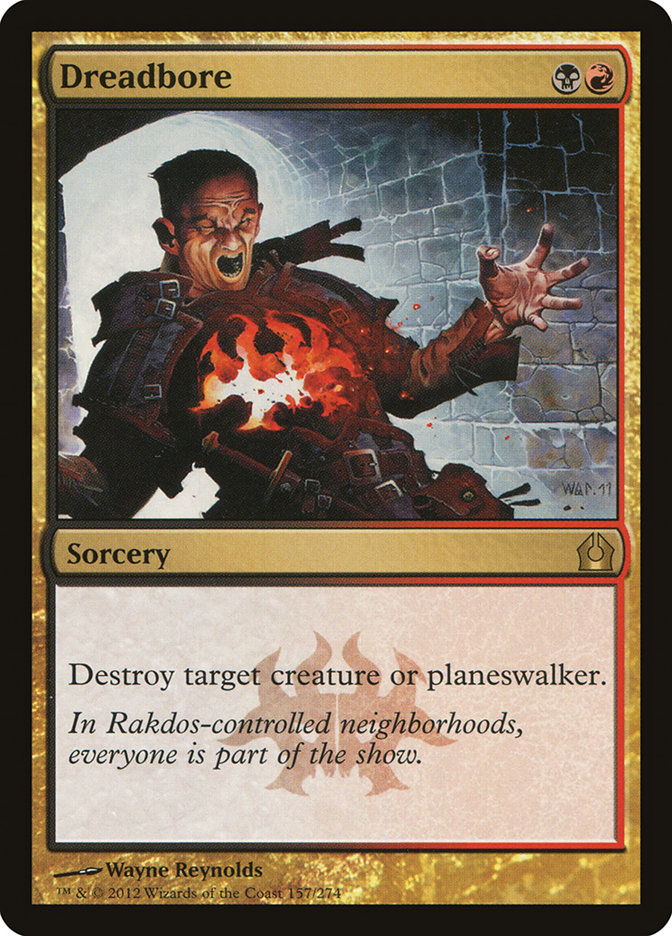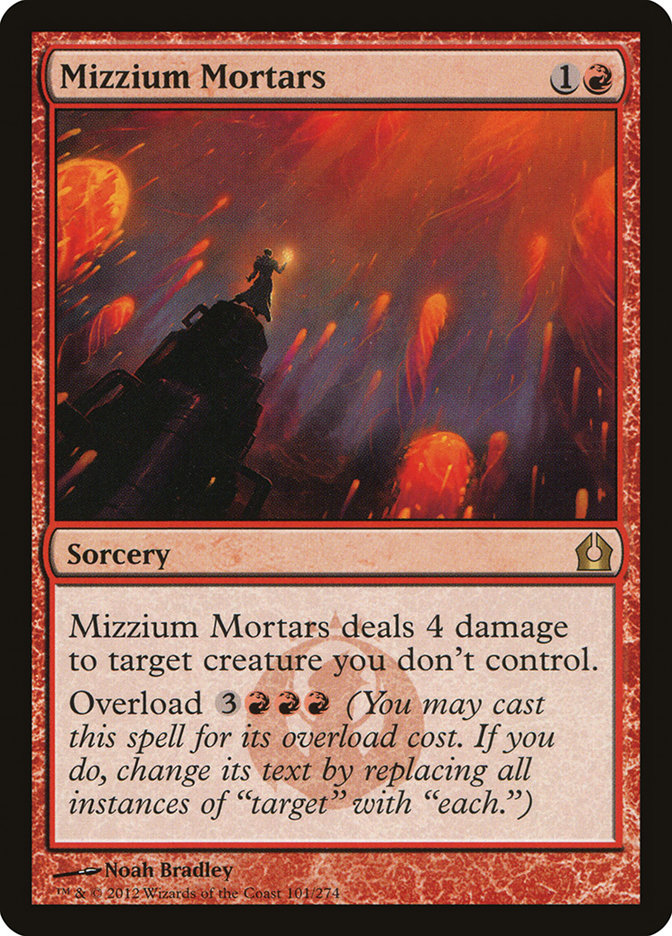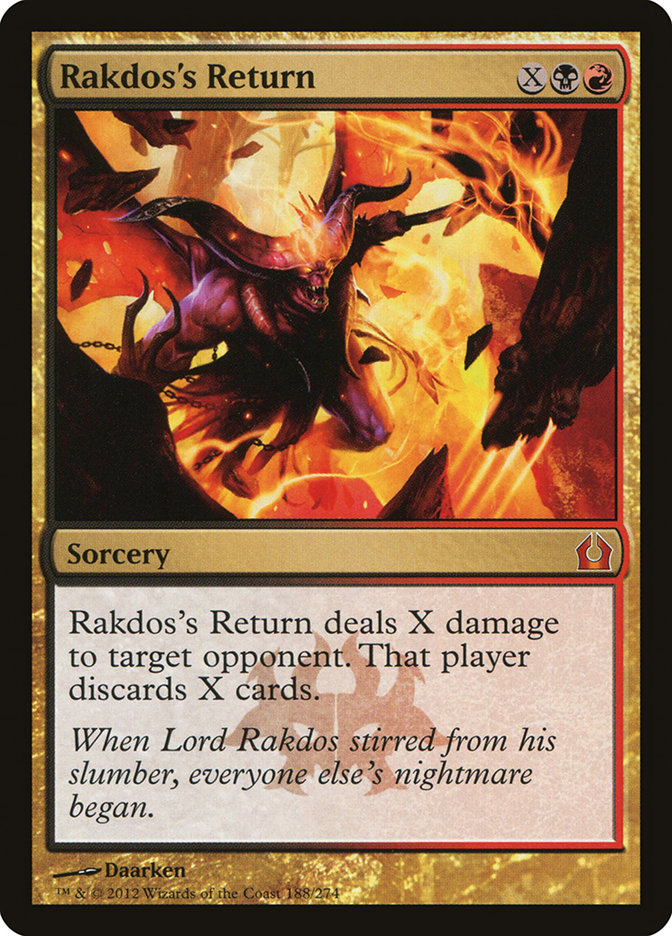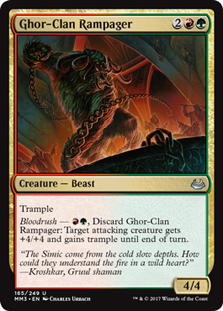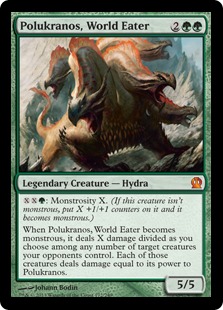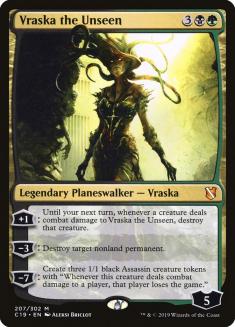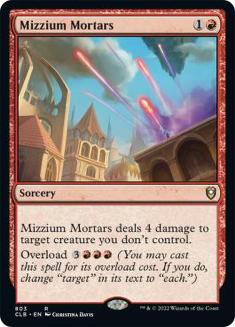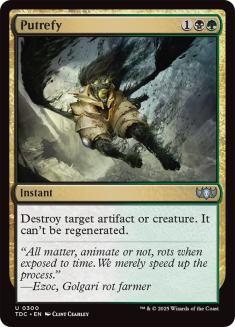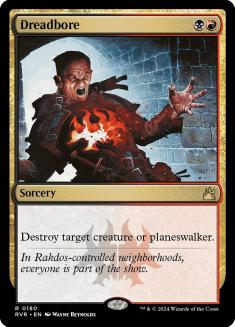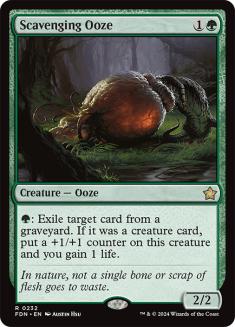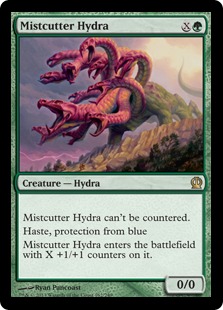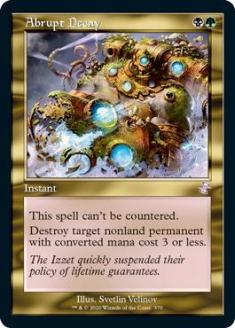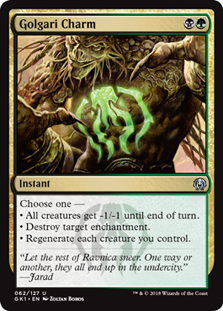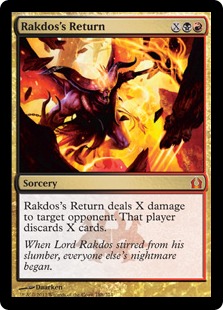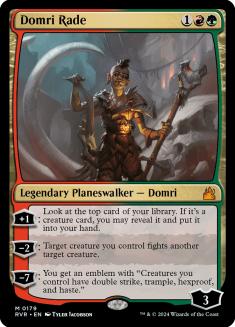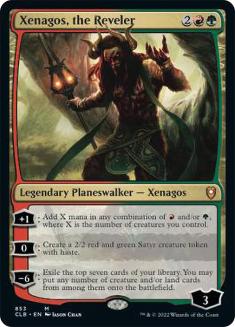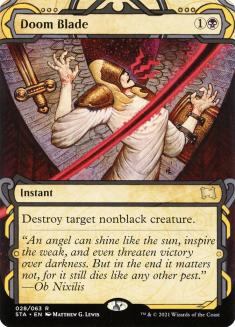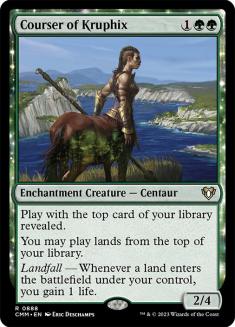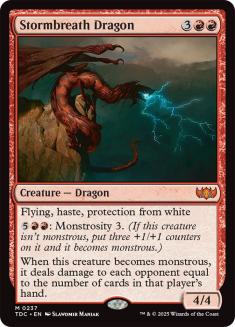Going into the Open Series last weekend in Cincinnati, I tried out a variety of
decks. First was a Junk deck, similar to what Jeff Hoogland ended up making Top 8 with. I liked the deck, but it frequently felt
like I was just at the mercy of whether or not I drew the right half of my deck for the matchup I was playing against. The next deck I tried out was
Mono-Black Devotion. Again the deck felt powerful, but I still found myself losing a lot to various aggressive decks. What I really wanted to play was
Reanimator, but I didn’t feel comfortable enough with the deck and didn’t really have enough time to fully dedicate to making it work.
Ultimately, I settled on Monsters. Monsters seemed well-positioned for the weekend, and while I was at the event, I felt like I had the best deck in the
room. I wanted to play straight G/R Monsters, because I felt like this was a weekend where you didn’t want to be damaging yourself a lot with your mana
base since I expected many aggressive decks. In the end, CVM talked me into playing Jund Monsters, and we both registered a similar Jund Monsters list.
Jund Monsters is the kind of deck that has a very powerful and very robust game plan. Between your variety of threats and solid removal options, Monsters
can easily hang with both Mono-Black Devotion variants as well as any Sphinx’s Revelation control deck. Against Mono-Black, you have removal and creatures
that trump theirs, and against Sphinx’s Revelation, you have Planeswalkers, hasty threats, and more disruption out of the sideboard.
Monsters also is fine against a lot of the slower aggressive decks. Your creatures simply are bigger and better than theirs, so if they aren’t killing you
before you get to lock up the board with something like Polukranos, then you are in extremely solid shape.
Where Monsters fails is against decks like Mono-Blue, where Master of Waves wrecks your day, and against decks like hyper aggressive Mono-Red or Boros
Burn, where they can kill you before Polukranos and friends can really do much. I was hoping to avoid playing against those decks and stick to playing
against the Voice of Resurgence-style aggressive decks along with Mono-Black and UWx Control decks.
As it turned out, I played against Revelation decks twice and Mono-Black a whopping four times, so Jund Monsters ended up being a fantastic choice for the
weekend. If the Top 16 is any indication, Black decks and Revelation decks both put up fantastic finishes, so I would expect to see Jund Monsters
continuing to be a strong metagame choice.
Creatures (26)
- 3 Scavenging Ooze
- 4 Ghor-Clan Rampager
- 4 Elvish Mystic
- 4 Polukranos, World Eater
- 4 Sylvan Caryatid
- 4 Stormbreath Dragon
- 3 Courser of Kruphix
Planeswalkers (7)
Lands (23)
Spells (4)

I ended up going 8-2 and finishing in tenth place with the above list. My two losses were to G/B Dredge and an interesting Esper Midrange deck. In essence,
I lost to two lesser-known quantities and beat the more established and expected decks. I think that’s a fine place to be. I also think I had a shot to
beat the G/B deck if I’d had more experience in the matchup and known exactly how to play it. I can’t pinpoint exactly where, but I do feel like I could
have done something differently in Game 1.
As I think this is still a strong metagame choice, I’d like to hit on some of the card choices that CVM and I came to (although our lists did differ) and
why I think they are the correct cards to be playing in this archetype.
Polukranos, World Eater is pretty much a given in Monsters. Polukranos is the biggest threat and can wreak the most havoc by virtue of its Monstrosity
ability. Beyond Polukranos, though, there is definitely some debate as to what other four-drops to run. You can only realistically run a certain number of
them, because it is important to not flood yourself on this spot in the curve, so some decisions have to be made as to which ones are the best to play.
Personally, I think Reaper of the Wilds is the sure cut. Reaper of the Wilds is the best against the raw aggressive decks, because it’s very difficult to
plow through and its scry ability can keep you drawing relevant answers throughout the game; however, it is by far the least versatile card, and worse
against a lot of other archetypes.
Ghor-Clan Rampager, on the other hand, isn’t really that much worse than Reaper as a 4/4 with trample, but the upside of his Bloodrush ability is enormous
in pushing through board stalls, attacking past Desecration Demon, killing Planeswalkers like Elspeth and Jace, or simply killing your opponent. I think
the power of Ghor-Clan Rampager is one of the reasons to play this deck in the first place.
I guess that leaves Xenagos, the Reveler. I don’t have a whole lot to say about Xenagos other than that I think he is one of the best cards in the format and the single most powerful threat in standard against Mono-Black Devotion. Yeah. I know
I’m a bit higher on Xenagos than a lot of other people are, but this card is just so powerful. It’s a complete and utter beating against Mono-Black
Devotion and various Revelation decks. They have to answer it immediately or they won’t win. Even if they do, you usually get a Satyr and a few points of
damage out of the mix, which isn’t too bad.
Xenagos also enables many broken draws if he doesn’t die. Xenagos is one of those snowball cards where if your opponent doesn’t immediately deal with it,
he will take over the game completely and put them so far behind that they can’t come back and win anymore. Considering he isn’t actually that bad
defensively as a fog and a Satyr, I see no reason not to play Xenagos.
Xenagos overperformed for me in Cincinnati. It was similar to how he has overperformed for me every single time I have ever registered him in a deck. I
have yet to play a tournament with Xenagos where he hasn’t been one of the best cards in my deck. Seriously. Just play Xenagos, the Reveler. Play the
Planeswalker Xenagos. The God isn’t that good.
These two cards are kind of the heart and soul of the deck. Ooze is both good against midrange decks and aggressive decks. Against both, Courser grows out
of control if left unchecked and can provide value in gaining some precious life, even if the creature eventually bites it.
Courser of Kruphix similarly is a roadblock against aggressive decks, but against other midrange decks he can provide a lasting source of card advantage.
Courser of Kruphix ensures that you draw a much higher density of powerful cards than otherwise. Courser also interacts very favorable with cards like
Domri Rade, giving you perfect information on how to play the Planeswalker.
Jund Monsters is the kind of deck where you can win some games by just beating your opponent down and other games by grinding them out over the course of
several turns. Courser of Kruphix is the kind of card that is going to serve you exceptionally well in the games you grind them out. While it isn’t as
flashy or aggressive as a card like Boon Satyr, I would much rather have Courser in my deck. Against decks like Mono-Black Devotion, you need cards like
Courser that keep you flowing in gas over cards like Boon Satyr that can be occasional blowouts but also occasional duds.
I knew I wanted some combination of these cards for my maindeck. Originally I was on Dreadbore and Flesh//Blood. CVM talked me out of playing Flesh//Blood
and I ended up settling on Dreadbore and Mizzium Mortars instead. I still think that Flesh//Blood is pretty sweet, especially with Ghor-Clan Rampager in
the mix, but I conceded to playing just the more overall solid cards. Mizzium Mortars and Dreadbore are rarely going to be bad, but Flesh//Blood can
sometimes be a 2 and sometimes be a 10. I opted for more consistency.
Dreadbore is a fantastic all-around utility spell. In the majority of circumstances, it is better than Mizzium Mortars because it can kill problematic
cards like Desecration Demon and Elspeth. If Dreadbore is generally better than Mortars, why even play Mortars?
The reason is that the overload is sometimes the most powerful effect you can have. Oftentimes, the overload of Mizzium Mortars is also the only way you
can conceivably win a game. For example, I played against Mono-Green Devotion one round, which is actually just a completely miserable matchup. Their
copies of Polukranos are better thanks to Nykthos and Arbor Colossus slaps Stormbreath Dragon out of the sky like an annoying gnat.
They’re quicker to the board, more powerful, and they can really shut down your main avenues to winning. There’s just one advantage that Monsters has, and
that is that Mizzium Mortars kills 90% of their board when overloaded. In fact, I managed to win Game 1 by roughly ten-for-one’ing my opponent with an
overloaded Mortars when he had a Nykthos, Courser of Kruphix, and about nine other creatures with less than four toughness.
Similarly, I was able to beat a Gladecover Scout with Madcap Skills and Unflinching Courage thanks to the power of Mizzium Mortars. My philosophy on
Monsters is that you just want to play the most powerful spells you can and just throw them repeatedly at your opponent until they lose. Mortars is one of
the most powerful spells out there. The upside is so high that it makes it worth playing.
To go off of what I just said, I opted to play Rakdos’s Return over Thoughtseize for the same reason. It’s the more powerful card. CVM went with
Thoughtseize, but I just wanted to have the bigger and scarier effect. I want all my non-land, non-mana dork draws later in the game to be cards my
opponent dreads facing down. I have a lot of mana, thanks to cards like Elvish Mystic, Sylvan Caryatid, and Xenagos, the Reveler. I might as well use that
mana to make my opponent discard their entire hand…and oh yeah, kill their Jace as well.
He’s back. Recognize it.
Sideboarding
Most of the sideboard consists of removal spells. The threats in Standard are so powerful and so diverse, that no one removal spell can rule them all, with
the exception of perhaps Hero’s Downfall, but Downfall has the issue of being hard to cast with its double black mana cost. I want cards like Doom Blade
for Master of Waves, Putrefy for Desecration Demon, and Abrupt Decay for Detention Sphere or Domri Rade. Monsters’ threats remain powerful across most
matchups, but the removal options vary drastically, and it is important to have a solid mix to give us an edge in post-board games.
Vs. Mono-Black Devotion, or Variants thereof
Out:
In:
Courser of Kruphix isn’t always good against them, but I do like it because it conveniently a 2/4 against Lifebane Zombie’s 3/1. You can attack past
Lifebane Zombie and also fight it with Domri Rade. It also can come down before Lifebane if you’re on the play or have an Elvish Mystic.
Ghor-Clan Rampager is very good Game 1 against them but gets a lot worse post-board because they bring in cards like Doom Blade and Lifebane Zombie.
Polukranos can still be great, because it matches up well against cards like Mutavault and Lifebane Zombie while in play, but sometimes when they are ahead
they can just let your Polukranos live and race you while you’re stuck with additional copies in hand.
I kind of want to bring in Rakdos’s Return, because it can sometimes just get them, but I’m not sure what I would want to side out. The inclination would
be some mana creatures, since games can sometimes go long and they become dead draws, but siding out mana sources to bring in expensive X spells is just
asking to get destroyed by Thoughtseize into Devour Flesh. Thanks, but no thanks.
I think Mono-Black Devotion is a great matchup for Monsters.
Vs. UWx Control
Out:
In:
It’s tempting to want to side out Elvish Mystic or Sylvan Caryatid to play less into Supreme Verdict, but you have Golgari Charm now to save your
creatures, and it’s important to get off to a strong early start. Sticking a Xenagos or Domri underneath their countermagic and then using cards like
Abrupt Decay, Golgari Charm, and Vraska to keep the hits coming even if they have a Detention Sphere is the easiest ticket to victory.
It’s also notable that we’re adding in a whopping six X spells in Rakdos’s Return and Mistcutter Hydra. Without Elvish Mystic and Sylvan Caryatid, those
cards are not getting cast for reasonable amounts.
This is also a very good matchup.
Vs. Burn
Previously, I had been losing a lot to Burn. However, I had someone provide some helpful sideboarding suggests in the comments section when I played
Monsters in a Magic Online video weeks back.
Out:
In:
Cut all the Planeswalkers. Domri and Xenagos are simply too slow to successfully race, Domri, especially. Xenagos isn’t that bad, but Mistcutter Hydra is
surprisingly a better version of the same card. Mistcutter hits harder, quicker, which is important because a lot of games come down to a race. They have
enough burn to kill you, so you just have to kill them first.
Cutting sorcery-speed removal for instants is great, because killing Chandra’s Phoenix can serve as a huge tempo boost and Fog effect. They invest three
mana but deal you zero damage. Sure, they can recur the Phoenix, but that actually doesn’t matter at all in the majority of games, because card advantage
matters far less than speed and tempo.
I was able to follow this sideboard when I played against Burn in Cincinnati and I was able to win the match as a result. In fact, Mistcutter Hydra dealt a
strong eight damage to finish my opponent off in one game where I was under pressure from a Chandra’s Phoenix and the multitude of cards in his hand.
Vs. Monsters
Out:
In:
Courser of Kruphix has a fairly irrelevant body in this matchup. Rampager and Polukranos both outclass Courser and it’s just fodder for Domri’s -2. Xenagos
is actually a card I think is fine in the matchup but probably worse than the cards to bring in. CVM hates Xenagos here, but I’ve had the card be good in
the mirror match on multiple occasions.
Rakdos’s Return is an interesting one. I actually think an argument can be made for siding it in on the play, but I usually opt against it because on-board
presence is so powerful in this matchup and trying to fight the wrong game can easily be game over. Blowing out their hand and still losing to their board
is a real thing, especially with the power of cards like Polukranos and Scavenging Ooze.
Vs. Mono-Blue Devotion
Out:
In:
Cards like Scavenging Ooze and Xenagos aren’t at their best against Mono-Blue. For one, creatures are only usually dying from combat, so removal spells are
one of the few ways to build a huge Ooze. Secondly, Xenagos just gets outclassed by a lot of what Mono-Blue is doing and is pretty slow. He doesn’t beat
Master of Waves.
Stormbreath Dragon is basically just a worse version of Mistcutter Hydra. Hydra hits as hard and can’t get hit by a Rapid Hybridization or Cyclonic Rift if
the clock is actually relevant.
Even though Courser of Kruphix doesn’t really put any pressure on Mono-Blue, I have found him to be surprisingly good in the matchup. He locks down the
ground well and the incremental advantage becomes a lot better in post-board games where removal spells can hopefully keep you from just getting destroyed
by Master of Waves in short order.
Vs. Hexproof
Out:
In:
Cutting all the Stormbreath Dragons might be wrong. Stormbreath can help race Hexproof. However, Stormbreath is very slow and doesn’t play defense very
well, which is not what you want against this deck. Xenagos also doesn’t play defense that well, but Xenagos can provide mana to overload Mizzium Mortars,
which is basically the best thing you can do against them.
Golgari Charm is an All-Star. It kills an enchantment, and both Gladecover Scout and Bassara Tower Archer die to the -1/-1. It does it all.
So there you have it. Play big Monsters. Smash opponent. Collect reward. It’s a formula that demons have perfected. Or maybe that’s feasting. Either way,
if I were playing this weekend in Knoxville, I’d be smashing with
Monsters, and I can’t recommend the deck enough. It has so much game that players tend to hate it.
Don’t be a player, a hater, or a player hater. Embrace the game. Embrace Monsters. Just don’t embrace Polukranos. He can get a bit feisty.

